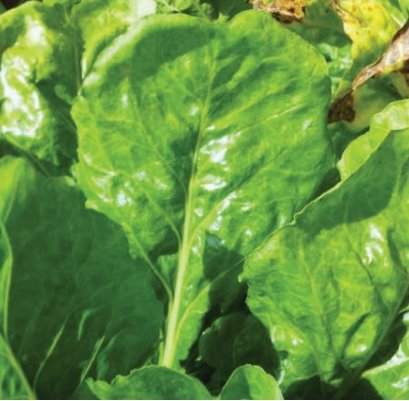Beet mosaic virus
Beet mosaic virus (BtMV) can be present in association with other viruses and causes less damage than viruses within the virus yellows complex, but can be harder to control.
Identification
Light green chlorotic spots appear on younger leaves first, in a circular pattern often with sharply defined margins. Chlorotic rings develop on older leaves with or without green centres. Infected leaves become stunted and distorted.

BtMV infection of leaves.
(Photo: John Fletcher, Plant & Food Research Ltd.)
Importance
Up to 7% incidence of infected plants detected in infected crops in a 2016 survey in the North Island and up to 16% in the South Island, although its current importance and incidence is not known BtMV is aphid and mechanically transmitted.
Spread
Aphids are the primary source of infection. Feeding aphids acquire and transmit the virus very quickly (within minutes of starting feeding). However, aphids only retain the virus for a few hours after ceasing feeding. The virus can also be transmitted by sap between plants.
Management
BtMV can occur on beet weed hosts, so good weed control is important for disease management. Over-lapping crops of beet and volunteers can also be important sources of infection. Spraying aphids to control disease transmission is not practicable. Insecticidal seed treatment may offer some early protection. No source of resistance is readily available.

